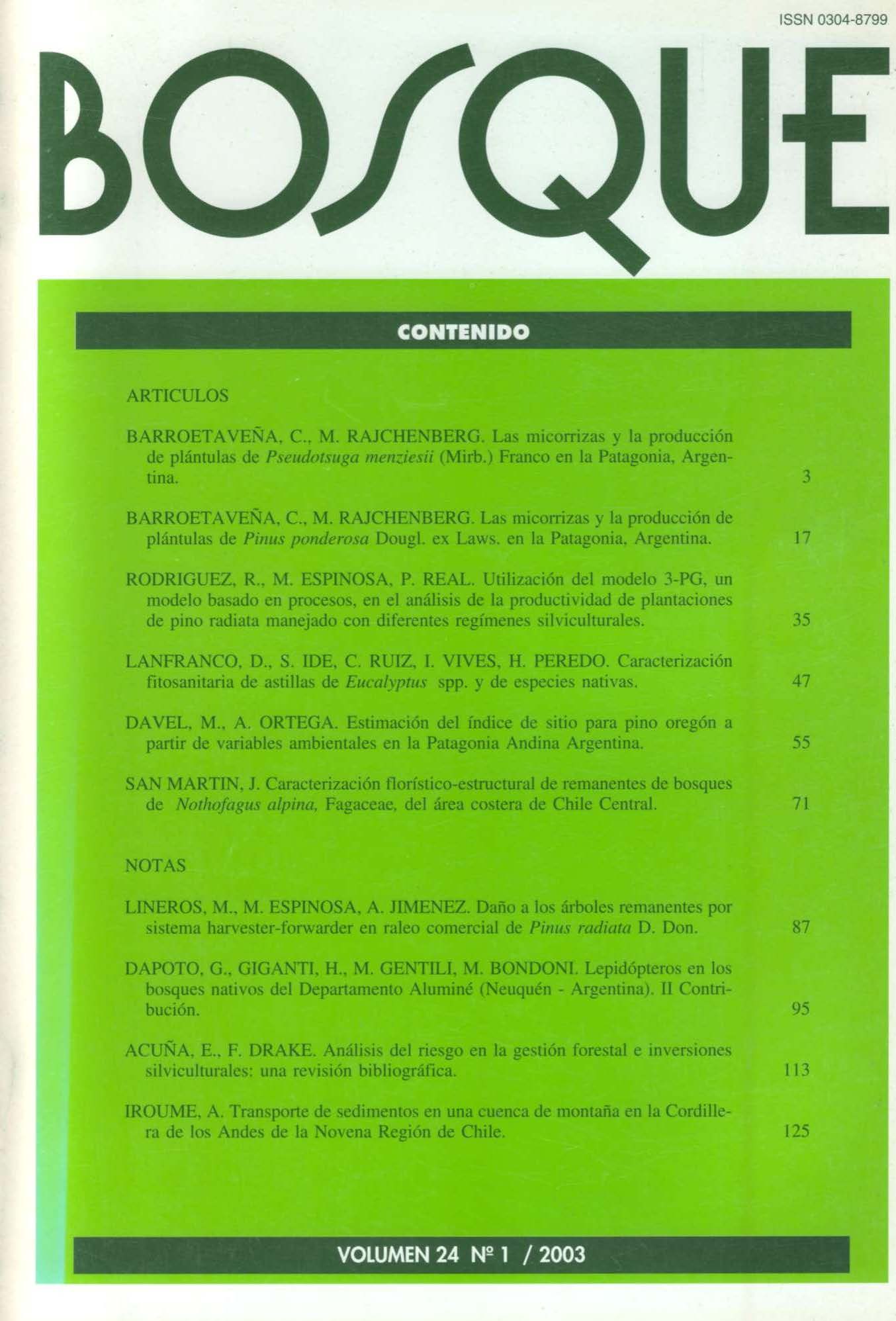Main Article Content
Jan 31, 2003
Abstract
Damage to residual trees produced by a harvester-forwarder system was evaluated during commercial thinning of a 16-year-old stand of Pinus radiata D. Don. In several circular samples with a radius of 20 m, the diameter at breast height (DBH), total height, and crown classes were measured in all trees. In damaged trees, the origin, size, intensity, and location of injury were recorded. Only 12.3% of the trees showed some kind of damage, especially co-dominant trees. The injuries to damaged trees were homogeneously distributed between the base and stem of the tree, and most commonly consisted of torn bark without exposure of the cambium.


